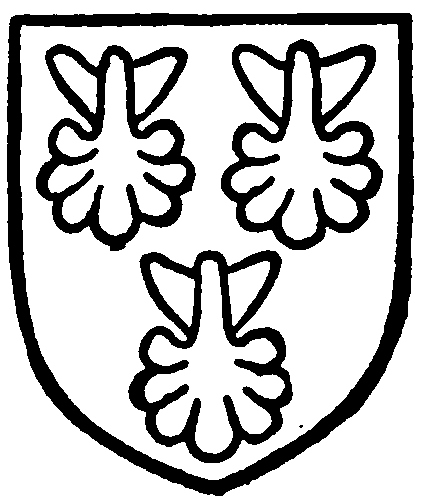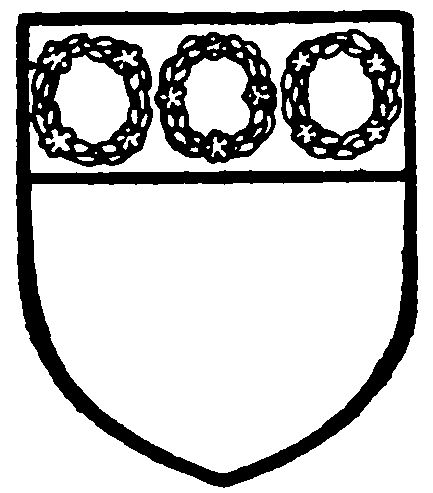A History of the County of Hampshire: Volume 4. Originally published by Victoria County History, London, 1911.
This free content was digitised by double rekeying. All rights reserved.
'Parishes: Whitsbury', in A History of the County of Hampshire: Volume 4, ed. William Page (London, 1911), British History Online https://prod.british-history.ac.uk/vch/hants/vol4/pp594-595 [accessed 25 February 2025].
'Parishes: Whitsbury', in A History of the County of Hampshire: Volume 4. Edited by William Page (London, 1911), British History Online, accessed February 25, 2025, https://prod.british-history.ac.uk/vch/hants/vol4/pp594-595.
"Parishes: Whitsbury". A History of the County of Hampshire: Volume 4. Ed. William Page (London, 1911), British History Online. Web. 25 February 2025. https://prod.british-history.ac.uk/vch/hants/vol4/pp594-595.
In this section
WHITSBURY
Wychbury, Wicheberia (xii cent.); Wiccheburi, Wicheburia (xiii cent.); Witchebury, Whyttesbury, Whistlebury (xvi cent.); Whichbury (xvii cent.); Whitchbury (xix cent.).
The parish of Whitsbury was originally in the Wiltshire hundred of Cawden and Cadworth, but was transferred to Hampshire (fn. 1) in 1895, although the parliamentary county boundary allots it to Wiltshire. It contains 1,823 acres, of which 904½ are arable, 689½ are permanent grass and 113 are woodland. (fn. 2) The village, with its straggling village street and timbered and thatched houses, is in the narrow Avon valley, about 300 ft. above the ordnance datum, while the church is on one of the ridges of the hills which run north-west from the valley and merge in the Wiltshire downs.
The land rises generally from south to north, reaching a height of 400 ft. at Whitsbury Camp, which is an earthwork containing about 15½ acres within the rampart. There are tumuli on Whitsbury Down and parts of Grims Ditch are still visible on the northern boundary of the parish. Whitsbury Wood, Whitsbury Firs and Whitsbury Common are east and south of the village. The inclosure award for Whitsbury is included with that of Rockbourne and is dated 1798. (fn. 3)
The soil is chalk and light sand with a subsoil of chalk and sandstone.
Manor
Although not mentioned in the Domesday Survey, the manor of WHITSBURY (fn. 4) was said in 1274–5 to have belonged to the Kings of England until the time of Henry I, who granted it to the monastery of Reading. (fn. 5) Seventeen years later it was asserted that Henry I had given the manor to Godfrey de Vilur, who transferred it to the abbey. (fn. 6) Whoever the donor, the manor certainly belonged to the abbey in the time of Henry I, who confirmed to it the church of the vill and land there which had belonged to Ingram the monk, and later sovereigns added like confirmations. (fn. 7)
In 1171–2 Philip de Hampton (fn. 8) had a suit against the Abbot of Reading as to Whitsbury, but in 1181 he had not yet obtained judgement. (fn. 9) In 1222 the abbot obtained a grant of twenty oaks in the New Forest for mending his houses at Whitsbury. (fn. 10) In 1274–5 he claimed return of writs, pleas of namii vetiti, gallows and the assize of bread and ale in Whitsbury, (fn. 11) but in 1291–2, being summoned to declare his right, he denied any claim to the first two liberties, but stated that his predecessors had been in seisin of the other rights in the time of Henry I. (fn. 12)

Reading Abbey. Azure three scallops or.
After the Dissolution the site of the manor was leased in 1540 for twenty-one years to Anthony Cotes, the tenant of the abbot, (fn. 13) and five years later the manor itself was granted to Richard Morrison. (fn. 14) He died seised in 1556, leaving a son and heir Charles, (fn. 15) who was succeeded in 1599 by his son Charles, (fn. 16) created a baronet in 1611. (fn. 17) The latter sold the manor in 1623 to Sir John Cooper, bart., of Rockbourne, (fn. 18) and from that date it has descended with Rockbourne (q.v.).

Morrison, baronet. Argent a chief gules with three wreaths or therein.
Church
The church of ST. LEONARD is a modern building in late 13th-century style, comprising chancel, north vestry, nave and west tower. The east window is a triple lancet with pierced heads and the other windows are of similar type. A moulded arch connects chancel and vestry. The chancel arch is also moulded and rests on corbel capitals. In the vestry is an 18th-century table. The material is flint, interspersed with stones, and with brick buttresses and tower.
The tower contains nine bells.
The plate consists of a silver chalice and paten given by John Starr in 1673, a tankard-shaped plated flagon and a mazer bowl mounted in silver.
The registers are contained in three books. The first has all entries from 1714 to 1750, the second has baptisms and burials from 1780 to 1812, the third book has marriages from 1780 to 1812. There is thus a gap in all three entries from 1750 to 1780.
Advowson
The church of Whitsbury is mentioned in confirmation charters of Henry I, Henry II, Richard I and John to the abbey of Reading, (fn. 19) but in spite of this the abbey never seems to have possessed the church, as it was granted with the tithes of the manor and all land adjacent to it to the priory of Breamore at the time of its foundation by Ingelramus Apostolicus, (fn. 20) or Ingram the monk, and his gift was confirmed by Henry I. (fn. 21) The advowson remained in the possession of the priory of Breamore till the Dissolution, (fn. 22) when it passed to the Crown. In 1545 the advowson and the rectory were granted to John Broxholme and John Bellowe. (fn. 23) The advowson is next mentioned in 1618 when John Penruddock presented. (fn. 24) It had probably been purchased of Broxholme and Bellowe by the Penruddocks, for Sir George Penruddock died in 1581 holding the rectory of Whitsbury, (fn. 25) which passed on the death of his son Edward in 1613 to John his son and heir. (fn. 26) John Penruddock remained in possession of the advowson until 1626, when he conveyed it to John Gray and William Masters. (fn. 27) The advowson and rectory apparently next passed to Sir William Dodington, whose heir was returned as patron in 1645–50. At that time the vicar was receiving the profits of the rectory for life by the gift of Sir William. (fn. 28) From this date the advowson followed the descent of the manor of Rockbourne until 1822, when it was purchased by Admiral John Child Purvis, (fn. 29) on whose death in 1825 his son ViceAdmiral John Brett Purvis succeeded. (fn. 30) The advowson remained in the Purvis family until 1879, when it was purchased by Edward Edwards. (fn. 31) It was given by him in August 1898 to his daughter on her marriage with Commander A. B. Purvis, R.N., and the advowson is in her possession at the present day. (fn. 32)
The church of Whitsbury has always been in the diocese of Winchester and in the hundred of Fordingbridge in Hampshire, though all the parishioners lived in Wiltshire. (fn. 33) In 1428 it was returned that there were not ten inhabitants holding houses in the parish of Whitsbury, (fn. 34) but this return is made in Hampshire and may perhaps be accounted for by the fact that most of the householders lived in Wiltshire.
There is a Primitive Methodist chapel at Whitsbury.
Charities
In 1768 Charles Delafaye by his will, proved in the P.C.C. 5 February, bequeathed £200 South Sea Annuities, the interest to be laid out in physic or surgery for the poor, the surplus, if any, in apprenticing a poor boy. The trust fund now consists of £226 6s. 2d. consols with the official trustees, producing £5 13s. a year, which is usually applied in medical aid.
